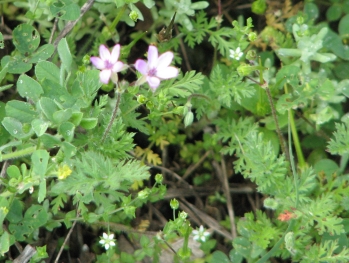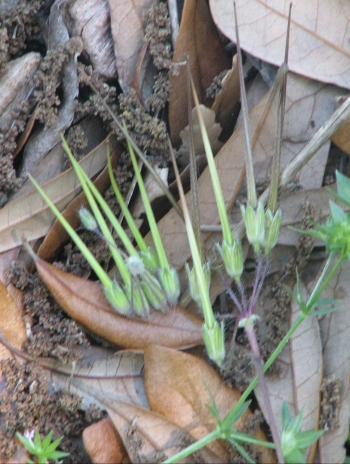Texas Blue Grass; Poa arachnifera.; comprising the largest family of grasses, the Bluegrasses are characterized by slender stems, thick mats of rhizomes, and narrow, slightly folded leaves. Kentucky Blue Grass is actually a European introduction brought over to feed horses, but over 50 species of Poa are indigenous to the USA. As the name arachnifera (spider like) implies, Texas Blue Grass grows outward from a dense center of roots, rhizomes reaching out in every direction. But when crowded, the stems and leaves grow upright, forming dense stands of soft green leaves and thin, jointed flower stalks. Tiny white flowers are widely spaced along thin spikes, the miniscule seeds hidden deep within tough bracts. Native to prairies, Blue Grass occurs mingled in with other vegetation, as long as taller plants are kept mowed back. Buffalo, then cattle, originally kept prairies mowed down, but where there are no large grazers, or periodic fires, shorter grasses like Blue Grass get shaded out.

Blue Grass habit; a relatively low growing grass that radiates out from a dense, central root clump, sending up flower stems ending in a loose spike of tiny, white flowers.

Note; medium height, jointed stalks amidst slightly folded, blunt tipped grass blades interspersed with other prairie vegetation.
























